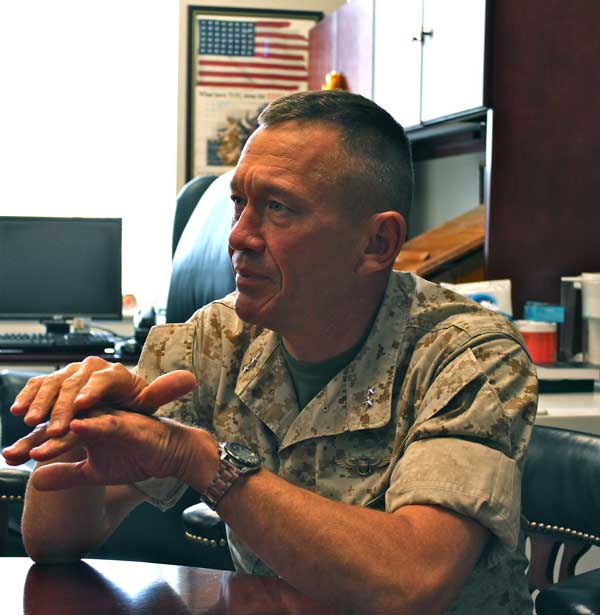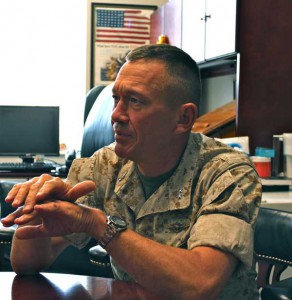By Dr. Richard Weitz
10/09/2011 – Using public data, the Center for Strategic and International Studies (CSIS), a Washington DC think tank, analyzed Department of Homeland Security (DHS) federal prime contracts from 2004 to 2010. The analysts note that the quality of this data has improved consistently over time, especially since the Barack Obama administration began using the Federal Procurement Data System (FPDS), the primary source of information for this report, as a management tool for judging agency performance. DHS reviewed the CSIS data and offered some corrections, some of which CSIS adopted.
Although the CSIS report only considers DHS spending, the authors note that DHS typically accounts for only half of all federal spending on homeland security. The U.S. Department of Defense (DoD) accounts for about one-quarter of the total federal total. The Departments of State, Energy, Justice, and Health and Human Services also regularly spend billions of dollars each year on homeland security. Almost all federal departments and agencies have some spending that fall into the homeland security category.
All dollar figures are in FY 2010 constant dollars unless otherwise indicated. Both regular appropriations and supplementary appropriations are included. The information and analysis only covers prime contracts, excluding sub-contracts and state and local contracts. Information regarding classified contracts is also not include since reporting regulations only require that unclassified contracts be included in FPDS.

As a service to readers interests in where DHS dollars have gone in the past and might go in this new Fiscal Year, SLD is presenting this information in several ways. We have also highlighted certain key interesting trends and issues:
DHS Contract Spending for Products, Services, and R&D
Looking at DHS spending on products, services, and research and development (R&D), the data suggests that the DHS is primarily a services contracting agency. From 2004 to 2010, contracts for service-based programs make up 70% of DHS federal contract spending on products, services, and R&D. In 2010, the Department of Homeland Security spent $10 billion on service-based contracts, while it spent only $3.2 billion on products and $0.4 billion on R&D.
The highest yearly spending on service contracts was in 2006. That year DHS spent $13.2 billion due primarily to Hurricane Katrina and its aftermath. This incident shows that DHS spending often surges following natural disasters and other domestic disasters or threats. In 2006 (the fiscal year in which Hurricane Katrina impacted DHS spending), total DHS federal contract spending was at its highest at $17 billion.
DHS Contract Spending by its Components
The Department of Homeland Security has six main components:
- Customs and Border Protection (CBP),
- Coast Guard,
- Transportation Security Administration (TSA),
- Federal Emergency Management Agency (FEMA),
- Office of the Secretary (OSEC), and
- Immigrations and Customs Enforcement (ICE).
Spending on contracts for each component does not vary much from year-to-year. FEMA is an exception due to its responsiveness to natural disasters. The OSEC has also been gradually increasing its share of contract spending.
Contract spending by the CBP range from $1.7 billion in 2004 to $2.9 billion in 2010, with the greatest sum spent in 2008 ($3.3 billion) and fewest in 2005 ($1.5 billion).
Contract spending by the Coast Guard ranged from $2.3 billion in 2004 to $2.8 billion in 2010.
The TSA spent an average of just over $1.8 billion from 2004 to 2010, with contract spending ranging from $1.7 billion to $2.0 billion.
FEMA spent $1.1 billion in 2004 and then saw its contract spending drastically increase as a result of Hurricane Katrina — in 2005 and 2006, FEMA spent $5.2 billion and $7.2 billion respectively. In 2007, FEMA’s contract spending fell to $1.7 billion and by 2010, FEMA was spending only $0.5 billion.
The OSEC saw its spending rise at a steady rate each year from $0.3 billion in 2004 to $3.0 billion in 2010.
DHS components’ spending on products is also consistent over time, with the exception again of FEMA:
From 2004 to 2010, DHS contract spending by the CBP on products averaged $0.61 billion; contract spending by the Coast Guard on products averaged $1.1 billion; contract spending by the TSA on products averaged $0.49 billion; contract spending by FEMA on products average $0.60 billion; and contract spending by the ICE on products averaged $0.14 billion.
FEMA experienced a sharp increase in contract spending on products in 2005 and 2006, spending $2.2 billion and $0.8 billion. In each other year from 2004 to 2010, there was not a single year in which FEMA spent more than $0.5 billion in contract funds on products.
DHS contract spending on services by its main components indicates several trends.
From 2004 to 2010, DHS contract spending on services rose from $4.9 billion to $9 billion, with a peak in service contract spending in 2006 at $12.5 billion. As a result, all of the key components saw a growth in service contract spending from 2004 to 2010 with the lone exception of FEMA. For example, the OSEC saw its service contract spending increase from $0.2 in 2004 to $2.5 billion in 2010 and the CBP saw an increase of $0.9 billion from 2005 to 2010.
FEMA on the other hand, reduced contract spending on services from $0.7 billion in 2004 to $.0.5 billion in 2010; however, in 2005 FEMA contract spending on services jumped up to $2.8 billion and rose to $6.1 billion in 2006, then declined each year after that leaving FEMA with the lowest contract spending on services of all components by 2010.
DHS contract spending on R&D by its main components does not show trends similar to products and services spending. Since R&D is the area in which the least contract spending occurs, it is hard to determine any distinct patterns in spending.
Contract spending on R&D reached over $1 billion only in 2006, again a product of Katrina. Based on the data, from 2004 to 2007 both the Coast Guard and TSA spent the most on R&D contracts; however, these numbers fall off after 2007 and from 2007 to 2010, the OSEC spent the most on R&D contracts. FEMA spent the most on R&D contracts in 2006 at $0.7 billion, which consequently was the most spent on R&D contracts by any component in any single year.
OSEC Contract Spending
The report looks at contract spending by the OSEC individually as it is the DHS component in which the greatest increase in contract spending has occurred. In 2004, OSEC contract spending was $0.3 billion dollars. This was the lowest of any component that year and made up less than 5% of DHS contract spending. By 2010, OSEC contract spending had risen to $3.0 billion dollars. Within seven years, the OSEC went from being the component spending the least on federal prime contracts to becoming the component spending the most on these contracts. In that seven year period (2004-2010), the OSEC went from less than 5% of DHS contract spending to nearly 22% of DHS contract spending.
DHS Contract Spending based on Competition
CSIS identifies four different types of competition in contract spending:
- competition with multiple offers,
- competition with a single offer,
- no competition,
- and finally unlabeled or unknown.
The main trend is that competition for DHS contracts has been increasing over time, with fewer sole source contracts in recent years and multiple companies bidding on more contracts. This may result from the fact that the administration has been using competition as one criterion in assessing the performance of DHS managers.
The DHS spent the most on contracts that had competition with multiple offers. From 2004 to 2010, DHS spending on contracts that had completion with multiple offers rose from $3.3 billion to $6.2 billion, with an average of $4.6 billion over the seven year period.
Contracts based on competition with a single offer received an average $3.3 billion dollars from 2004 to 2010, with yearly totals consistently between $2.0 billion and $4.0 billion.
From 2004 to 2010, contracts based on no completion received an average of $3.4 billion in DHS contract funding; however, taking out the $7.0 billion in DHS contract funding from 2006 (an outlier year due to Katrina), this average falls to $2.8 billion. DHS contract funds spent on unlabeled or unknown contracts averaged $2.3 billion over the seven years.
DHS Contract Spending by Funding Mechanism
The report tracks six types of funding mechanisms:
- fixed price,
- cost reimbursement,
- time and materials,
- combination,
- unlabeled, and
- other.
The majority of DHS contracts are funded through fixed price agreements, which in each of the seven years (2004-2010) drew over $5 billion. In 2004, fixed price agreements accounted for 61.6% of all contracts, and in 2010, nearly 56% of all contracts were fixed price agreements. Over the seven years, approximately 52% of DHS contracts were fixed price agreements.
In 2006 (again Katrina), cost reimbursement contracts jumped to $5.0 billion, but in all other years, cost reimbursement programs only were consistently between $2-$3 billion. A time and materials agreement, in which the DHS provide materials and pay for workers time, was the third most prevalent type of agreement, growing steadily from $0.6 billion in 2004 to $2.5 billion in 2010.
DHS Contract Spending by Contract Type
DHS uses seven types of contracts:
- definite contracts,
- purchase order contracts,
- single award IDC (indefinite delivery contract),
- multiple award IDC,
- FSS (Federal Supply Schedules) or other IDV (indefinite delivery vehicle), or
- blanket purchase contracts.
DHS most often grant single award IDCs. From 2004 to 2010, an average of almost $4.8 billion was spent on single award IDCs, accounting for more than 35% of all DHS contracting spending over that period.
The second most prominent contract type used by DHS is definite contracts, with an average of $2.3 billion per year. From 2004 to 2010, DHS spent $2 billion per year on FSS contracts and $1.9 billion on multiple award IDC’s. During the same period of time, DHS spent an average of $1.6 billion on blanket purchase contracts and just under $1 billion on purchase order contracts.
Number of Firms in DHS Market and Share of DHS Market based on Firm-size
The report divides firm size into three categories: large, medium, and small.
In each category, the number of firms receiving DHS prime contracts has risen substantially from 2004 to 2009, though the shares among each category has remained fairly constant over time, with small companies receiving some 30% of the contracts by value. In contrast, the data for the Department of Defense shows that the largest companies have been increasing their share of DoD prime contracts over time.
The CSIS analysts noted in their briefing that many of the prime contractors sub-contract tasks to other firms. For example, many large companies sub-contract to smaller firms to meet various federal and company objectives or to access their unique skills and technologies. Conversely, many medium and small firms will sub-contract to larger companies to exploit their more comprehensive assets. They were uncertain whether these flows favored one category or another but speculated that the flows probably cancelled each other out to a large extent.
Small firms comprise the majority of the firms receiving contracts from the DHS. The total number of small firms in the DHS market rose from 2,934 in 2004 to 12,212 in 2009. The number of medium firms in the DHS market rose from 1,192 in 2004 to 3,803 in 2009, reaching a peak in 2006 with 4,104 firms contracted through the DHS. In 2004, the number of large firms in the DHS market was 68. This number rose to 90 by 2009.
Despite the growth in number of firms from 2004 to 2009, the percentage of firms by size remains consistent over the six years. In 2004, the percentage of small firms making-up the DHS market was 70% and in 2009, the percentage had risen to 75%. The percentage of medium-sized firms in 2004 was 28% and in 2009 the average was 24%. The percentage of large firms in the DHS market was 2% in both 2004 and 2009.
Despite the disparity in number of firms for each size, the share in the DHS market by each of the three firm sizes is relatively even. From 2004 to 2009, small firms received an average of $4.15 billion in DHS contract dollars. Medium firms, over the same time period, received $4.10 billion in DHS contract funding. Large firms obtained the most DHS contract funding, receiving $5.35 billion dollars from 2004 to 2009.
Despite the limited number of large firms in the DHS market, these large firms receive the most DHS contract dollars. In 2005, the top five contractors of the DHS received $3.29 billion in DHS contract dollars. This accounts for 24% percent of all DHS contracting funds. In 2005, the top twenty contractors of the DHS received $6.01 billion, approximately 43% of all DHS contracting dollars. In 2009, the top five contractors of the DHS received $1.9 billion, only 13% of all DHS contract dollars. And, the top twenty contractors received $4.84 billion from the DHS, approximately 34% of all DHS contract spending.
In most years, the large firms receiving the most DHS prime contracts include the same companies that obtain the most DoD contracts by value. These include IBM, Lockheed Martin, Unisys, and Accenture. But during natural disasters, a different set of companies will typically rise to the surface. In 2005, the top 20 DHS contractors included Fairmont Homes, Clearbrook, and Circle B.
Conclusion
In their briefing, the CSIS analysts stressed the following key points:
- DHS contract spending is relatively stable, with the most instability relating to FEMA, whose spending typically surged for a year or two following natural disasters
- DHS contract spending on services has grown the fastest over time; spending on products has grown much more slowly; and DHS contract spending on R&D has decreased over time
- DHS contracting is very competitive, more so than those for DoD
- DHS contract managers have increased their use of fixed price contracts and definitive contracts over time, while reducing their use of purchase orders
- DHS contract spending is not well-positioned to survive major budget cuts, which look likely for the next few years.











